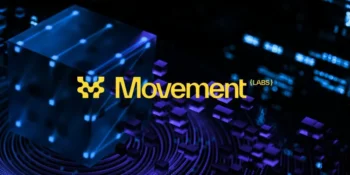Quantum computing and the future of cryptography are intimately related. Quantum computing poses a significant threat to traditional cryptography while potentially revolutionizing the field.
The threat of quantum computers to traditional cryptography
Quantum computers have become a significant threat to traditional cryptography, which relies on mathematical problems that are difficult for classical computers to solve but can be solved quickly by quantum computers using Shor’s algorithm.
Public-key encryption methods such as RSA and elliptic curve cryptography, widely used to protect sensitive information, may become vulnerable to hacking and data breaches as quantum computing advances because they are based on the difficulty of determining large numbers.
The potential for quantum computers to break traditional encryption methods has significant implications for the security of our digital infrastructure. Financial data, personal information, and state secrets are just a few examples of the sensitive information that may be at risk if quantum computers can crack current encryption methods.
Quantum key distribution (QKD) as a solution
Quantum key distribution (QKD) is a potential solution to the threat of quantum computers to traditional cryptography. QKD generally uses the principles of quantum mechanics to ensure secure communication between two parties, even in the presence of an eavesdropper.
The information is encoded into qubits in QKD and sent over a communication channel between the two parties. Any attempt by an eavesdropper to intercept the qubits will cause a disturbance in their state, alerting the parties to the security breach, which allows for secure communication without the need for complicated encryption methods.
The development of post-quantum cryptography
Developing post-quantum cryptography is a critical area of research and development aimed at creating encryption methods resistant to quantum computer attacks. Post-quantum cryptography is essential to ensure the security of our digital infrastructure in the face of the threat posed by quantum computers.
Post-quantum cryptography aims to develop new encryption methods that are resistant to quantum attacks. These methods rely on mathematical problems that are difficult for both classical and quantum computers to solve. Examples of post-quantum cryptography methods include lattice-based cryptography, code-based cryptography, and hash-based cryptography. Lattice-based cryptography is based on the hardness of finding short vectors in a high-dimensional lattice. Code-based cryptography uses error-correcting codes to create hard mathematical problems. Hash-based cryptography uses hash functions to create one-time pads that can be used to encrypt messages.
Research and development in post-quantum cryptography are still in the early stages. Several standardization bodies and research groups are developing new standards, such as the National Institute of Standards and Technology’s (NIST) Post-Quantum Cryptography Standardization Process.
The potential for quantum computers to improve cryptography
Quantum computers have the potential to improve cryptography in several ways. While quantum computers threaten traditional cryptographic methods, they can also be used to develop new encryption methods that are faster and more secure than current methods.
A potential use of quantum computers in cryptography is to develop new encryption methods based on the principles of quantum mechanics, such as quantum-resistant encryption algorithms.
Another potential use of quantum computers in cryptography is to break current encryption methods. While this may seem like a negative outcome, it can improve cryptography by identifying weaknesses in current methods and developing new, more secure methods.
Conclusion
Quantum computers can improve cryptography in several ways. While they threaten traditional cryptographic methods, they can also be used to develop new, faster, and more secure methods. Ongoing research and development in this area are crucial to realizing quantum computers’ full potential in cryptography.












